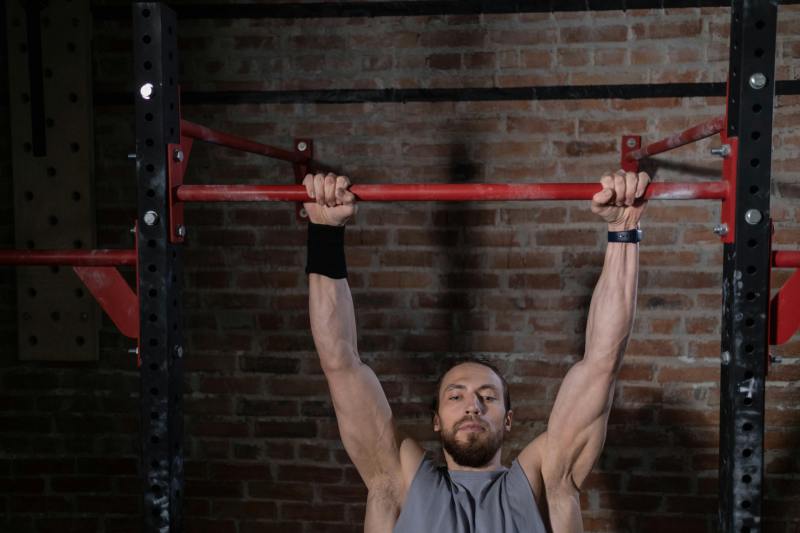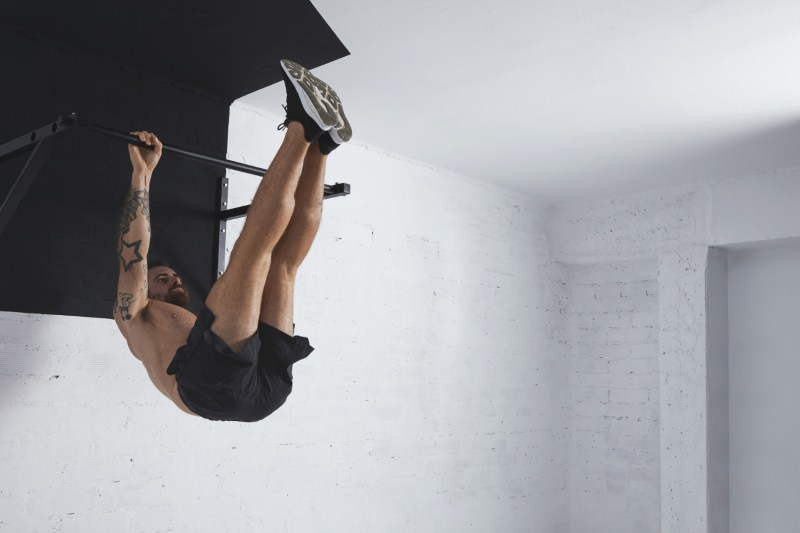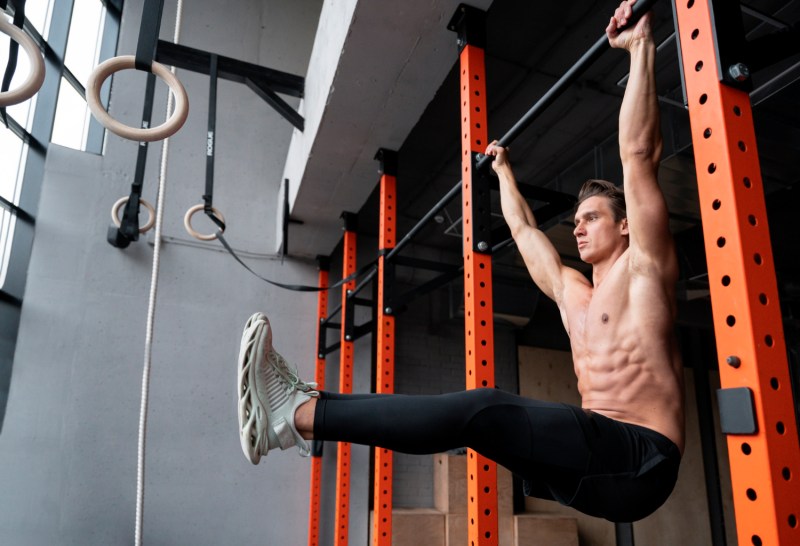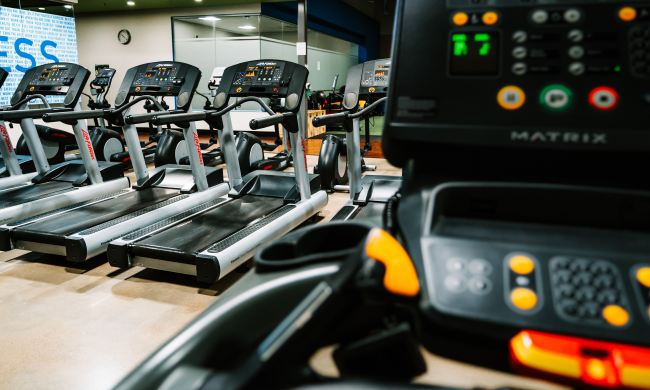Are you looking to build your core strength but only have access to a pull-up bar? Not a problem! As a personal trainer and workout enthusiast, some of my favorite ab exercises in my program involve a pull-up bar.
A strong core is essential for posture, stability, reducing your chance of injury, and more. An NIH study also shares that “core stability training is crucial for competitive athletes, individuals who want to improve their health and physical performance, and those undergoing clinical rehabilitation.”
Also, who doesn’t want the extra perk of a six-pack? Keep reading to discover an effective pull-up bar ab workout you can include in your routine!
7 pull-up bar exercises for a strong core

Hanging knee raises
Instructions:
- Grab the pull-up bar with an overhand grip and your arms fully extended.
- Keep your legs together and slowly bend your knees, bringing them toward your chest.
- Pause at the top, then lower with control.
Hanging leg raises
Instructions:
- Hang from the bar while maintaining a tight core.
- Keeping your legs straight and feet pressed together, lift them until they’re parallel to the floor or higher.
- Lower slowly without swinging.
Toes-to-bar
Instructions:
- Hang from the bar with a shoulder-width grip.
- Use your abs to lift your legs and touch your toes to the bar.
- Lower with control before repeating for reps.
Hanging windshield wipers
Instructions:
- Hang with your legs raised to 90 degrees.
- Slowly rotate your legs side to side like windshield wipers. The slower you move, the more challenging it will be.
L-sit hold
Instructions:
- Hang from the bar and lift your legs to a 90-degree angle.
- Hold that position, keeping legs straight.
- Breathe steadily and hold for a predetermined amount of time.
Hanging oblique crunch
Instructions:
- Start with a hanging knee raise.
- Twist your knees toward one side, guiding them to your shoulder.
- Come back down to the starting position before continuing to the other side.
Hanging bicycle kicks
Instructions:
- Hang from the bar and lift your knees.
- Pedal your legs like riding a bike.
- Keep the motion controlled and steady for a predetermined amount of time or reps.
Is a pull-up bar enough to see results?

A pull-up bar can be highly effective for developing your abs. Hanging exercises like leg raises, knee tucks, and toes-to-bar intensely engage the entire core, especially the lower abs, which are often hard to target. With consistent practice and progressive challenge — such as increasing reps or adding time — you can build strong, defined abdominal muscles using just a
While a pull-up bar won’t train every core muscle perfectly on its own, it’s an excellent tool for strengthening and sculpting your abs without requiring any extra equipment or floor space.
Tips for getting the most out of your workout

To get the most out of your pull-up bar ab workout, consider the following tips:
- Focus on form and control. Avoid swinging or using momentum; instead, engage your core throughout each movement to maximize muscle activation.
- Start with manageable reps and gradually increase intensity or volume as your strength improves.
- Incorporate a full range of motion to target all areas of your abs, especially during hanging leg raises and toes-to-bar.
- Maintain a steady breathing pattern, exhaling as you lift and inhaling as you lower your legs.
- Warm up properly before starting to prepare your shoulders and core, as this reduces the risk of injury.
- Rest adequately between sets — about 30 to 60 seconds — to maintain quality and avoid fatigue.
- Be consistent. Regularly practicing these exercises will build endurance and definition over time.
- Pair your ab workout with a balanced diet and overall fitness routine for the best visible results.
Programming suggestions for reps, sets, and weekly schedule

When programming a pull-up bar ab workout, start with three to four sets of each exercise, aiming for eight to 15 repetitions per set, depending on your fitness level and ability. Beginners may start with closer to eight reps, focusing on form and control, while advanced exercisers can aim for 15 or more reps or increase difficulty through variations.
Rest for 30 to 60 seconds between sets to allow your muscles to recover while maintaining intensity. Incorporate two to three pull-up bar ab sessions per week to see the most results while also allowing proper time for rest.
To avoid plateaus, gradually increase the challenge by adding reps, sets, or more difficult exercises like toes-to-bar or windshield wipers. Mixing in static holds, such as L-sits, can also improve core endurance.
For balanced core development, combine pull-up bar ab workouts with other core exercises targeting the front, sides, and lower back throughout the week. As we mentioned before, consistency and progressive overload are key for lasting results.
Frequently asked questions

How do you work the lower abs with a pull-up bar?
To target your lower abs on a
Should I do abs on a push day or a pull day?
You can train abs on either a push or pull day, as neither day contains exercises that predominantly require core strength. The key is consistency; choose the day when your abs aren’t already fatigued and you can train them effectively.
Can you build abs with pull-ups?
Yes, pull-ups can help with building abs, especially the upper and deep core muscles. They engage the entire core to stabilize your body during each rep. For even more ab activation, try variations like L-sit pull-ups or add slow, controlled negatives to challenge your core while strengthening your upper body.




